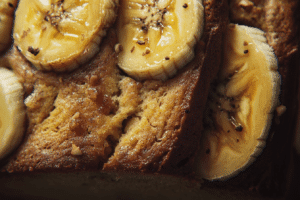Jump to:
Estimated reading time: 12 minutes
Table of contents
Homemade sourdough bagels are a tasty and authentic treat you can make at home. This recipe comes from “Artisan Sourdough Made Simple”. It uses an active sourdough starter for soft, chewy, and flavorful bagels.
The process starts with mixing the dough. Then, it rises overnight. After that, you shape the bagels, boil them in honey water, and bake them. This makes the bagels chewy and flavorful, just like New York-style ones.
This recipe guides you through every step, from making the sourdough starter to serving the bagels. It’s perfect for both new and experienced bakers.
Key Takeaways
- This sourdough bagel recipe yields delicious, chewy bagels with a tangy flavor.
- The recipe includes instructions for preparing the sourdough starter and shaping the bagels.
- Boiling the bagels in a honey-infused water bath is a crucial step for achieving the classic New York-style texture.
- Baking the bagels at 425°F for 20-25 minutes results in a perfect golden-brown crust.
- Homemade sourdough bagels can be stored at room temperature for up to 2 days or frozen for up to 3 months.
Introduction
Sourdough bagels are a delightful homemade treat. They are made with an active sourdough starter. Unlike regular bagels, sourdough bagels have a tangy, chewy texture.
This recipe comes from “Artisan Sourdough Made Simple.” It’s easy to follow. It helps you make these tasty sourdough bagels at home.
Whether you’re experienced or new to sourdough, this guide is for you. It covers everything from starter prep to baking. You’ll learn to make perfect homemade bagels in your kitchen.
With this guide, your home will smell like freshly baked bread. It’s a great way to enjoy sourdough bagel baking.
“Sourdough bagels are a true labor of love, but the end result is well worth the effort. The complex, tangy flavor and chewy texture are simply unparalleled.”
Let’s start our journey into sourdough bagel baking. Here, tradition meets innovation.

The History of Sourdough Bagels
Bagels have a long history, starting in the 17th century in Poland with Jewish communities. They became a favorite in New York City. This recipe uses sourdough starter, making the bagels more complex and tasty.
Origin of Bagels
The bagel’s roots are in Poland’s Jewish communities. The special shape and boiling method were for the Jewish Sabbath. Jewish immigrants brought these traditions to the US, merging with New York-style bagels.
The Sourdough Difference
Sourdough bagel history brings a unique twist. It uses a mature sourdough starter for a tangy taste and chewy texture. This makes sourdough bagels stand out from regular ones.
Why Choose Sourdough for Bagels?
Using a mature sourdough bread starter makes these bagels more nutritious and easier to digest. The slow fermentation process enhances the flavor and texture, unlike commercial yeast.
“Sourdough bagels are a testament to the enduring power of traditional baking methods, combining the cultural heritage of Polish Jews with the ingenuity of American innovation.”

Ingredients for the Perfect Sourdough Bagel
To make delicious sourdough bagels, you need the right ingredients. This recipe requires an active sourdough starter, good bread flour, and warm water. The starter gives the bagels their tangy taste and chewy texture. The flour makes them structured and crumbly.
Essential Ingredients
- Sourdough starter: A lively sourdough starter is key. It makes the bagels taste sour and complex.
- Bread flour: This flour has more protein than all-purpose flour. It makes the bagels chewy.
- Water: Warm water helps activate the starter and mixes the dough.
- Honey: A bit of honey adds sweetness and makes the bagels golden.
- Salt: Morton’s Kosher salt or other good salts enhance the flavor.
Substitutions and Variations
Want to try something different? Use whole wheat or rye flour instead. You can also add toppings like everything seasoning, sesame seeds, or poppy seeds. For a sweeter taste, try using barley malt syrup, molasses, white sugar, or brown sugar instead of honey.
Where to Source the Best Ingredients
Choose a trusted brand of bread flour, like King Arthur. Keep your sourdough starter healthy and active. This ensures your sourdough bagels turn out perfectly every time.
| Ingredient | Recommendation |
|---|---|
| Sourdough Starter | Keep a healthy, active starter fed with bread flour for the best results. |
| Bread Flour | Use a high-quality brand like King Arthur for optimal protein content and texture. |
| Toppings | Try a variety of options like everything bagel seasoning, sesame seeds, or poppy seeds. |
“The secret to making the perfect sourdough bagel is in the quality of the ingredients and the care taken in the fermentation process.”
Preparing the Sourdough Starter
To make perfect sourdough bagels, start with a strong sourdough starter. This starter is full of wild yeast and bacteria. It’s what makes sourdough taste so special and rise so well. First, you need to activate your starter.
Activating Your Starter
Start by feeding your starter with flour and water. Do this regularly. As it feeds, it will get bubbly and grow in 8-12 hours. This means it’s ready for your bagel dough.
Maintaining a Healthy Starter
To keep your sourdough starter healthy, feed it often. Also, keep it at the right temperature and discard some before each feeding. This keeps it balanced and ready to make your bagels rise.
What to Do If Your Starter Isn’t Rising
If your sourdough starter isn’t rising, don’t worry. Try changing the feeding ratio or feeding it more often. Also, check your kitchen’s temperature. These steps can help your starter get active again.
“A strong, active sourdough starter is the foundation for making delicious sourdough bagels.”
Mixing and Kneading the Dough
Making the perfect sourdough bagel dough is a key step. Start by mixing the active sourdough starter, water, sugar, flour, and salt in a big bowl. Whisk the wet ingredients together, then add the flour and salt slowly. Use your hands to mix it into a stiff, shaggy dough.
How to Mix the Dough Properly
To mix sourdough bagel dough right, make sure all ingredients are mixed well. Knead the dough for 40-50 minutes. This makes the dough smooth and elastic, giving it a chewy texture.
Kneading Techniques for Bagel Dough
When kneading the bagel dough, fold, press, and turn it. Fold the dough over itself, then press down with your hand. Keep doing this until the dough is smooth and elastic. This builds the gluten that makes bagels chewy.
Resting and Proofing the Dough
After kneading, let the sourdough bagel dough rest for 2 hours. It will double in size. This step is important for flavor and structure. Once it’s proofed, shape the dough into bagels. Let them proof again overnight or for 2 hours at room temperature before baking.
“The secret to a perfect sourdough bagel is in the dough’s development. Patience and attention to detail during the mixing, kneading, and proofing stages are key to achieving that signature chewy texture.”
Shaping the Bagels
Shaping sourdough bagels is key to a great final product. Begin by dividing the dough into equal parts. Roll each into a smooth ball and then make a hole in the middle with your thumb. Stretch the hole to form the classic bagel ring.
The Classic Bagel Shape
The traditional way to shape bagels is by making balls and then a hole in the middle. This method creates the iconic ring shape we all love. With some practice, you can master this simple technique.
Alternative Shaping Techniques
- Bagel Knots: Try shaping the dough into tight knots for a fun twist.
- Bagel Twists: Roll the dough into a rope, twist it, and then shape into a ring.
- Bagel Bites: Shape the dough into small balls for a tasty, easy snack.
Common Mistakes to Avoid
- Overworking the Dough: Handle the dough gently to keep it soft.
- Letting the Holes Close Up: Keep the hole open during shaping and proofing.
- Uneven Sizing: Divide the dough evenly for consistent bagels.
Mastering bagel shaping can make your creations beautiful and delicious. With practice and care, you’ll soon be making perfect bagels.
Discover the health benefits of sourdough and how it can elevate your bagel-baking experience.
The Boiling Process
Boiling is key to making perfect sourdough bagels. It sets the crust and gives them a chewy texture. Submerging the bagels in hot water makes them shiny and golden.
Why Boil Bagels?
Boiling bagels does several things. It makes the crust crisp and the shape set. It also cooks the outside a bit, making them chewy.
How to Boil Bagels Correctly
- Prepare a large pot of water and bring it to a gentle simmer.
- Add a tablespoon of honey or a teaspoon of baking soda to the water. This will help create the desired shiny, chewy crust.
- Gently lower the shaped bagels into the simmering water, ensuring they don’t stick together.
- Boil the bagels for approximately 30 seconds on each side, flipping them carefully with a slotted spoon.
- Remove the boiled bagels from the water and place them on a baking sheet lined with parchment paper.
Adding Flavors and Toppings
After boiling, you can add toppings and flavors. This makes your bagels unique and tasty. Some favorites include:
- Sesame seeds
- Poppy seeds
- Everything bagel seasoning
- Dried onions or garlic
- Coarse salt
You can choose any toppings you like. This lets you make bagels that are just right for you.
“The key to a perfect bagel is in the boiling process. It’s what gives them that signature chew and shiny crust.”
Baking the Bagels
The last step in making sourdough bagels is baking them. You need to preheat your oven to a hot 425°F. Then, bake the bagels for 20-25 minutes until they’re golden and puffed.
This high temperature and baking time are key. They help get a crust that’s thin and crispy. Meanwhile, the inside stays soft and chewy.
Achieving the Perfect Crust
To enjoy perfect baking sourdough bagels, keep the oven temperature and time right. The heat makes the crust thin and crispy. It matches the soft, chewy inside of the bagels.
Watch the bagels while they bake. This prevents the crust from getting too dark too fast.
Troubleshooting Common Baking Issues
Having trouble with your bagel baking? Here are some tips:
- Adjust the oven temperature: If the bagels brown too fast, lower the oven by 10-15°F.
- Extend the baking time: For a crisper crust, bake for 5 more minutes.
- Check for oven hot spots: Rotate the baking sheet halfway to bake evenly.
By using these tips and watching your bagels, you’ll get a perfect crust every time.
Storing and Reheating Sourdough Bagels
Fresh sourdough bagels are a joy to eat. But, you don’t have to eat them all in one day. With the right storage and reheating, you can enjoy them for days.
Best Ways to Store Fresh Bagels
Keep your sourdough bagels fresh by storing them at room temperature. Use an airtight container or bag. This keeps them crisp on the outside and soft inside. Don’t refrigerate them, as it can make them stale and rubbery.
Your bagels can stay fresh for up to 3 days. After that, toast or freeze them for longer storage.
How to Reheat Without Losing Quality
To reheat your bagels, use a toaster or oven at 300°F for a few minutes. This brings back the crisp crust and warms the inside without drying it out.
If you froze your bagels, thaw them at room temperature first. This helps them retain their texture and flavor.
Freezing and Defrosting Tips
- You can freeze sourdough bagels for up to 3 months, whole or sliced.
- Freeze them in a single layer on a baking sheet, then move to an airtight container or bag.
- When you’re ready, thaw the bagels at room temperature before reheating.
By storing and reheating your sourdough bagels right, you can enjoy them for days or weeks.
Serving Suggestions
Sourdough bagels are great with many toppings, spreads, and drinks. They’re perfect for breakfast or lunch. You can try many different flavors.
Classic Toppings and Spreads
A sourdough bagel and cream cheese is a favorite. Add some butter, lox, and capers for a tasty mix. Try nut butters, avocado, or hummus for something new.
Creative Bagel Sandwich Ideas
- Breakfast sandwich: Scrambled eggs, crispy bacon, and melted cheddar cheese
- Vegetarian sandwich: Grilled vegetables, roasted red peppers, and pesto
- Lunchtime delight: Sliced turkey, Swiss cheese, and honey mustard
- Brunch beauty: Smoked salmon, cream cheese, and capers
Pairing Bagels with Drinks
Sourdough bagels go well with many drinks. Enjoy them with coffee or iced tea in the morning. For a boost, try a latte or freshly squeezed juice in the afternoon. There are many great pairings to try.
Health Benefits of Sourdough Bagels
Sourdough bagels are not just tasty and chewy. They also have health benefits that regular bagels don’t. The sourdough starter makes the bagels more nutritious. This is because the fermentation process breaks down grains, making nutrients easier for our bodies to use.
Nutritional Value
Sourdough bagels have more protein and fiber than regular bagels. This makes them more filling and good for you. A 100g portion of sourdough has 230 kcals, 7.8g protein, 0.7g fat, 47g carbs, 2.9g fiber, and 0.81g salt.
Digestive Benefits of Sourdough
The way sourdough is made makes it easier to digest. It breaks down proteins, including gluten, which helps with digestion. It also helps keep blood sugar stable, which is good for people who want to manage their sugar levels.
Comparing with Regular Bagels
Regular bagels are often high in calories and carbs but low in nutrients. Sourdough bagels are a better choice. A sourdough everything bagel has 183 calories, 6.5g protein, 4.9g fiber, and 1.4g sugar. This makes it a healthier option.
Sourdough bagels are made through a slow fermentation process. This process has health benefits like degrading gluten and breaking down anti-nutrients. They are also rich in fiber, vitamins, minerals, and antioxidants, making them a superfood for your microbiome.
Conclusion
Learning to make sourdough bagels at home is a fun and rewarding journey. This sourdough bagel recipe comes from the best-selling “Artisan Sourdough Made Simple” book. It makes creating sourdough bagels easy and straightforward.
Using an active sourdough starter gives your bagels a special flavor. This flavor is different from what you find in store-bought bagels.
If you love baking or are just starting, this guide has everything you need. It covers making the sourdough starter to baking the bagels. Each step is explained in detail to help you succeed.
By following this recipe, you’ll make sourdough bagels that look great and taste amazing. They’re perfect for breakfast or as a snack. Your friends and family will love them.
Start your journey in making homemade sourdough bagels. It’s a way to enjoy the history and health benefits of this bread. With this recipe, you’ll make bagels that are not only beautiful but also full of flavor and texture.
More Easy Breakfast Recipes:
- How to Make the Best Homemade Breakfast Bars
- Apple Peanut Butter Amazing Slices Recipe – Quick & Healthy
- Apple Granola Yogurt Sandwich: Perfect Healthy Breakfast
- Banana Oatmeal Pancakes: Amazing Fluffy Recipe Ready in 15 Min
Recommended
📖 Recipe Card
Sourdough Bagel Recipe
- Total Time: 6-8 hours (includes rise time)
- Yield: 8 bagels 1x
Description
These sourdough bagels are chewy, flavorful, and perfect for breakfast or snacks. The natural tang of sourdough adds depth to this classic treat!
Ingredients
- 1 cup active sourdough starter (fed and bubbly)
- 1 1/4 cups warm water
- 3 1/2 cups bread flour
- 1 tbsp sugar
- 2 tsp salt
- 1 tbsp barley malt syrup (optional, for added chewiness)
- 2 tbsp baking soda (for boiling)
- Optional toppings: sesame seeds, poppy seeds, everything bagel seasoning
Instructions
- Make the dough: In a large bowl, mix the sourdough starter, warm water, sugar, and barley malt syrup (if using). Gradually add the bread flour and salt. Knead for 8-10 minutes, until the dough is smooth and elastic.
- First rise: Place the dough in a lightly oiled bowl, cover with a damp towel, and let rise at room temperature for 4-6 hours, or until it has doubled in size.
- Shape the bagels: Punch down the dough and divide it into 8 equal pieces. Roll each piece into a ball, then poke a hole through the center of each ball using your thumb. Stretch the hole until it’s about 2 inches wide.
- Second rise: Place the shaped bagels on a parchment-lined baking sheet, cover with a towel, and let rest for 1 hour.
- Boil the bagels: Preheat the oven to 425°F (220°C). Bring a large pot of water to a boil, and add the baking soda. Boil each bagel for 1-2 minutes per side, then remove and drain on a clean kitchen towel.
- Add toppings and bake: If using toppings, dip the bagels in them after boiling. Place the bagels on the baking sheet and bake for 20-25 minutes, or until golden brown.
Notes
- Barley malt syrup is optional but gives the bagels extra chewiness and flavor. You can substitute honey or molasses if you don’t have it.
- For a more intense sourdough flavor, let the shaped bagels rise in the fridge overnight before boiling and baking.
- To ensure even browning, rotate the baking sheet halfway through baking.
- Prep Time: 25 minutes
- Cook Time: 25 minutes
Nutrition
- Serving Size: 1 bagel
- Calories: 250
- Sugar: 2g
- Sodium: 450mg
- Fat: 1g
- Saturated Fat: 0g
- Unsaturated Fat: 1g
- Trans Fat: 0g
- Carbohydrates: 52g
- Fiber: 2g
- Protein: 8g
- Cholesterol: 0mg








